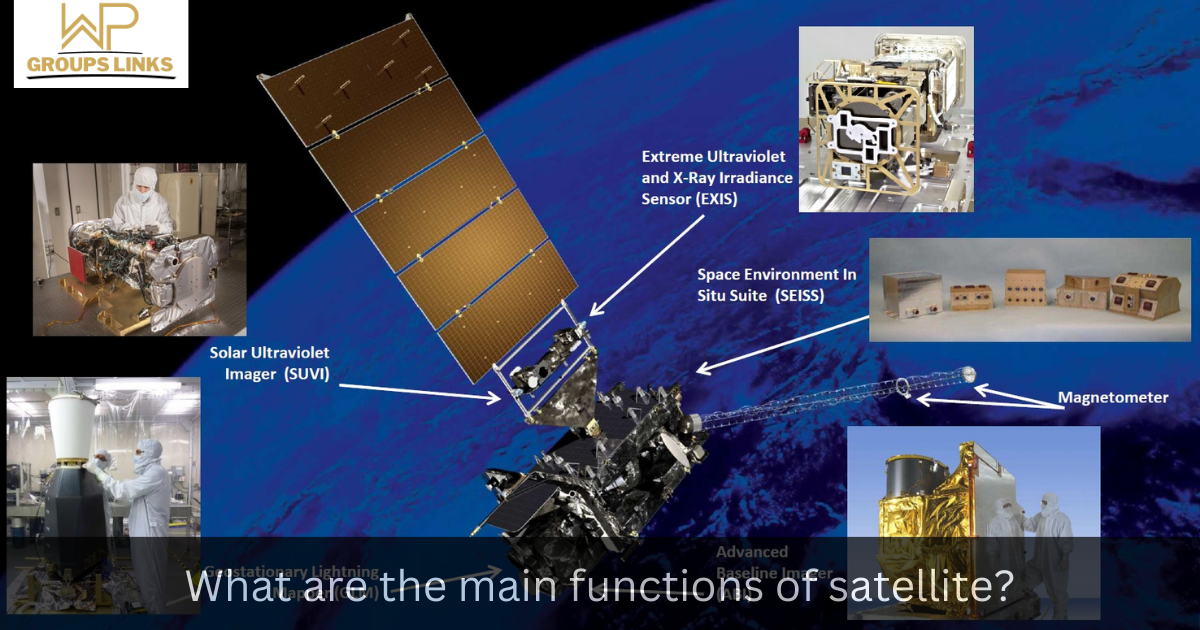Functions of Satellite
Satellites have become an integral part of modern life, transforming the way we communicate, navigate, observe Earth, and conduct scientific research. These artificial objects orbiting the Earth provide an array of crucial functions, enabling global connectivity, accurate positioning, detailed imaging, and valuable data collection. In this article, we will explore the main functions of satellites and how they have revolutionized various fields.
Communication:
Overview: Satellites play a pivotal role in global communication networks, facilitating reliable and efficient communication across vast distances.
Telecommunication Satellites: Geostationary satellites enable television and radio broadcasting, long-distance telephone calls, internet connectivity, and satellite-based communication services.
Direct Broadcast Satellites: Satellites in low Earth orbit (LEO) provide direct-to-home television broadcasting services, enabling the delivery of high-quality digital content to homes around the world.
Mobile Communication:
Satellites contribute to mobile communication networks, ensuring seamless connectivity in remote areas and during disasters.
Navigation:
Global Positioning System (GPS): Satellites are fundamental to GPS, providing precise positioning, navigation, and timing information for a wide range of applications, including transportation, aviation, maritime navigation, and outdoor recreational activities.
Satellite-based Augmentation Systems (SBAS): Satellites enhance GPS accuracy through SBAS, correcting signal errors caused by atmospheric conditions and enhancing the reliability of navigation systems.
Earth Observation:
Remote Sensing: Satellites equipped with sensors and cameras capture valuable data about Earth’s surface, atmosphere, and oceans.
Environmental Monitoring: Satellites monitor climate change, deforestation, natural disasters, and pollution, providing valuable data for scientific research and policymaking.
Weather Forecasting: Meteorological satellites capture images and data used to monitor weather patterns, track storms, and generate accurate weather forecasts, aiding in disaster preparedness and mitigation efforts.
Agriculture and Land Management: Satellites provide data for precision agriculture, helping optimize crop growth, monitor soil conditions, and assess water availability. They also support land management, including urban planning and monitoring of land use changes.
Scientific Research:
Scientific research is one of the key areas where satellites play a vital role. They provide scientists with valuable data and enable groundbreaking discoveries in various scientific disciplines. In this section, we will explore how satellites contribute to scientific research across different fields.
Astronomy: Satellites equipped with advanced telescopes and imaging instruments revolutionize our understanding of the universe. They can observe celestial objects without the limitations imposed by Earth’s atmosphere, providing clearer and more detailed images of distant galaxies, stars, and cosmic phenomena. Satellites like the Hubble Space Telescope and the James Webb Space Telescope have greatly contributed to our knowledge of the cosmos, unveiling new insights about the formation of galaxies, the existence of exoplanets, and the evolution of the universe itself.
Space Exploration:
Satellites are essential for space exploration missions. They enable scientists to gather data about other planets, asteroids, and the space environment beyond Earth. Satellites equipped with specialized instruments can analyze the composition of planetary surfaces, study atmospheric conditions, and search for signs of life. For instance, the Mars rovers, such as Curiosity and Perseverance, utilize satellite data to navigate and plan their missions on the Martian surface. Satellites also play a crucial role in monitoring space weather, which is vital for protecting astronauts and spacecraft from harmful radiation and solar flares.
Climate Studies: Satellites provide invaluable data for climate research, monitoring key variables that contribute to climate change. They measure greenhouse gas concentrations, such as carbon dioxide and methane, from space, helping scientists understand their sources and impact on the Earth’s atmosphere. Satellites also track changes in temperature, cloud cover, and ice caps, providing a global perspective on climate patterns and their effects. This data is crucial for modeling climate scenarios, assessing the health of ecosystems, and informing policy decisions related to climate change mitigation and adaptation.
Earth Sciences:
Satellites play a significant role in studying Earth’s geology, oceans, and atmosphere. They provide valuable data for understanding natural hazards, such as earthquakes, volcanic eruptions, and hurricanes, enabling better disaster preparedness and response. Satellites equipped with radar instruments can create precise topographic maps, aiding in geological research and the identification of potential mineral resources. They also contribute to oceanographic studies by measuring sea surface temperatures, ocean currents, and marine life distribution. This data helps scientists study ocean circulation patterns, track marine ecosystems, and monitor the health of coral reefs.
Environmental Monitoring:
Satellites contribute to monitoring and assessing environmental changes on Earth. They can detect deforestation, land degradation, and changes in land cover, providing valuable information for conservation efforts and land management. Satellites equipped with hyperspectral sensors can analyze the chemical composition of vegetation, identifying plant species and assessing their health. This information is essential for monitoring biodiversity, studying ecosystems, and managing natural resources sustainably.
Satellites have revolutionized scientific research by providing access to data and observations that were previously inaccessible. From advancing our understanding of the universe through astronomical observations to studying Earth’s climate, geology, and environment, satellites have become indispensable tools for scientists across various disciplines. As satellite technology continues to advance, scientists can expect even more sophisticated instruments and missions that will further enhance our knowledge and exploration of the natural world.



